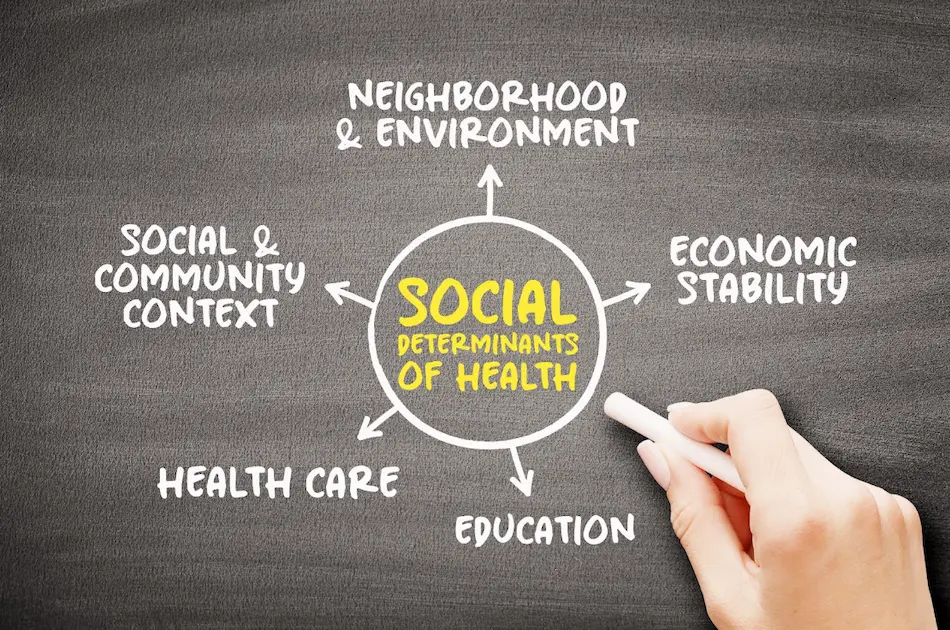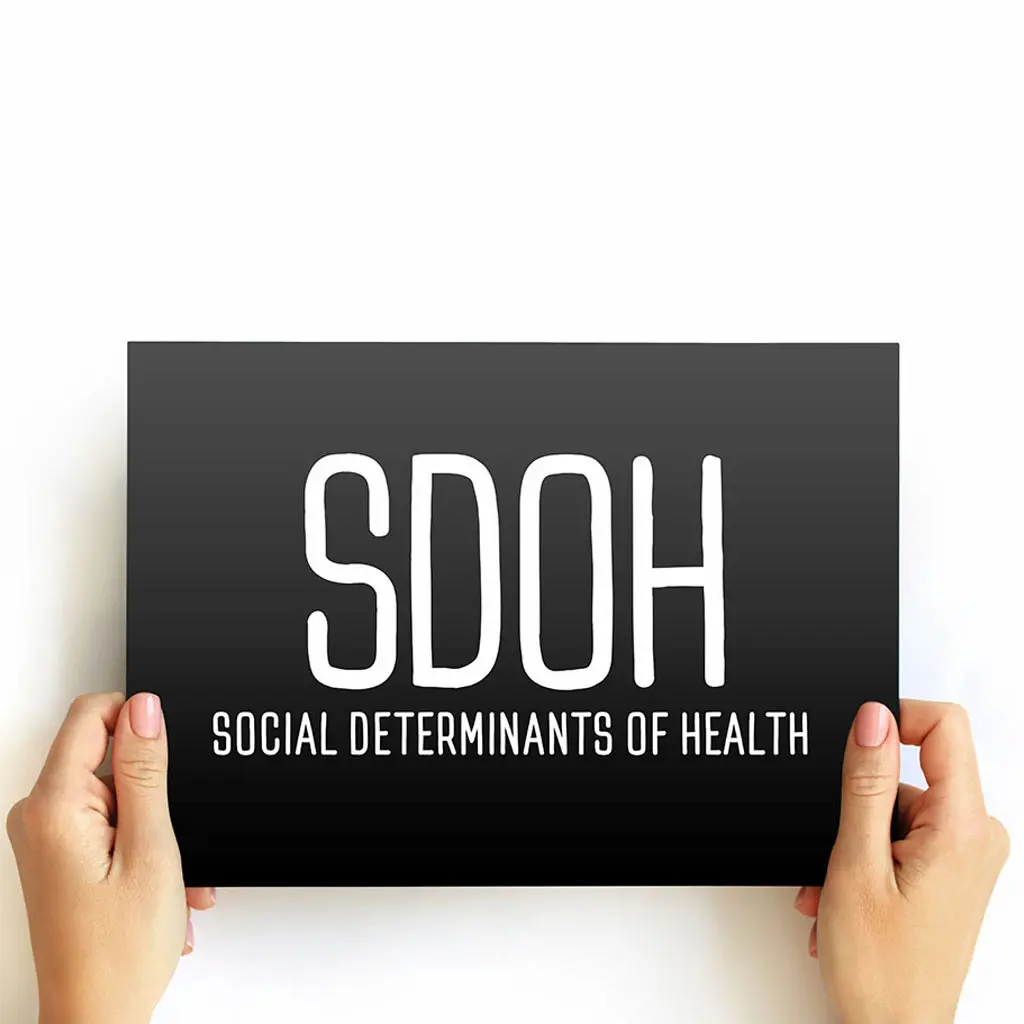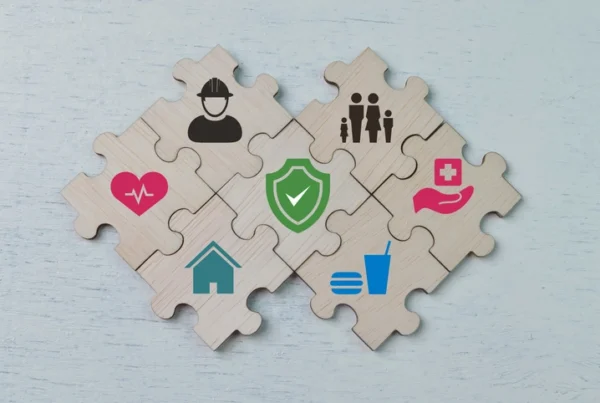California's SDOH: Key Impacts and Innovative Responses
The concept of Social Determinants of Health (SDOH) isn’t just a buzzword in healthcare; it’s a pivotal factor shaping health outcomes. No where is this more true than in California’s most vulnerable populations. In essence, SDOH refers to the conditions in which people are born, grow, live, work, and age. These factors significantly influence an individual’s health status and access to healthcare services. If you’re new to the topic, read our Social Determinants of Health overview for a full understanding of the factors at play.
In California, where diversity and disparity co-exist, understanding SDOH is crucial for healthcare executives aiming to improve patient outcomes and reduce costs. The state’s healthcare landscape is appropriately evolving to recognize these determinants as key drivers in shaping patient health. By addressing issues like socioeconomic status, education, neighborhood environment, and access to healthcare, stakeholders can create more equitable health systems. This approach not only benefits individual patients but also improves community health, ultimately reducing the burden on the state’s healthcare infrastructure.
Overview of Social Determinants of Health (SDOH)
Social Determinants of Health are the conditions in which people live, learn, work, and play. These conditions have a significant effect on a wide range of health outcomes. They go beyond direct clinical care, encompassing factors like economic stability and education, which affect long-term health. This concept is crucial in healthcare as it underlies why some populations enjoy better health care access and health outcomes than others.

Key Components of SDOH
The SDOH framework is often divided into five key areas that shape individual and community health:
- Economic Stability: Financial resources are critical in accessing healthcare, nutritious food, and stable housing. Without economic stability, people may have limited access to these necessities, leading to poorer health outcomes. According to CDC, economic factors like job stability and income influence health significantly.
- Education: Education opens doors to better job opportunities and a broader understanding of healthy living. Higher educational attainment is linked to improved health and increased life expectancy.
- Social and Community Context: Social networks and community engagement influence access to care and social support. They offer emotional and practical support that is vital for managing stress and preventing mental health issues. A connected community can lead to better health outcomes through shared resources and information.
- Health and Healthcare: Access to healthcare and having a healthcare provider one trusts is essential for timely and effective treatment. However, Healthy People 2030 indicates that barriers like lack of insurance or transportation can prevent individuals from receiving necessary care.
Neighborhood and Built Environment: The physical environment where one lives can impact health through factors like air quality, safety, and access to recreational spaces. Poorly designed environments can hinder physical activity and promote unhealthy lifestyles. Support from community members is critical to influence health outcomes.
Impact of SDOH on Health Outcomes
The influence of SDOH on health is profound, affecting everything from chronic disease prevalence to mental health.
- Chronic Disease Prevalence: Conditions like heart disease and diabetes are often linked to SDOH. For instance, living in a food desert with limited access to healthy foods can increase the risk of obesity and related illnesses. More insights can be found in this study by NCBI, which highlights the role of SDOH in chronic disease disparities.
- Mental Health: Social stressors such as unemployment or living in an unsafe neighborhood can exacerbate mental health issues. Social support and a sense of community belonging can mitigate these effects, improving mental health outcomes.
- Access to Healthcare: SDOH can create barriers to accessing healthcare. Those living in impoverished areas might face more significant challenges in getting medical attention, leading to untreated health conditions and worsening outcomes. The WHO discusses how these determinants contribute to health inequities globally.
Understanding and addressing these determinants are vital for improving health equity and reducing disparities. Recognizing their impact allows healthcare executives to create more comprehensive strategies that cater to needs from a population health perspective, not just individual patients. For a national perspective, view real-life examples of SDOH from across the country.

Current State of Social Determinants of Health in California
In California, the concept of Social Determinants of Health reflects a comprehensive look at how our environment shapes our well-being. The places we call home, the schools we attend, the work opportunities available, and even the parks where we play are part of a tapestry that affects our health. As we explore the current state of SDOH in California, it’s evident that multiple factors intersect to create varying health outcomes across the state.
Economic Disparities
Economic disparities in California are significant and have a profound impact on health. Not everyone has the same economic opportunities, leading to unequal access to resources. For many, living in areas with low employment rates and high costs of living means that putting food on the table can become a daily struggle. This often results in increased stress and reduced access to healthcare, significantly affecting physical well-being. A report from the California Department of Public Health highlights that these economic inequalities often translate into health disparities, such as higher rates of chronic diseases in lower-income communities. How can we ensure everyone has a fair chance to live a healthy life?
Educational Inequities
The link between education levels and health outcomes is undeniable. In California, those with higher levels of education often experience better health. Education can lead to better job opportunities and access to health knowledge, which directly influences life choices, health promotion and health outcomes.
Unfortunately, educational opportunities are not equally available to all Californians. Neighborhoods with underfunded schools often produce students with lower graduation rates, perpetuating a cycle of disadvantage. For a detailed look at educational disparities and their impact on health, the California Health Care Foundation provides valuable insights. How can ensuring equal educational opportunities lead to better health for everyone?
Access to Healthcare Services
Access to healthcare services remains a challenge for many Californians, particularly those in rural or low-income areas. Barriers such as lack of transportation, high healthcare costs, and insufficient health insurance can make accessing care difficult. This is especially true for preventive services, which are essential in maintaining health and catching issues early. The California Assembly Bill 2250 aims to address some of these barriers by integrating SDOH screenings into routine healthcare.
These social determinants of health form the foundation of the well-being of California’s diverse communities. Addressing them requires a multifaceted approach, focusing not only on individual behaviors but also on systemic changes that support equitable health outcomes for all. These changes will heavily rely on our political systems to develop economic policies and social policies in line with the needs of all members of the community, including the oft-forgotten ones with nonmedical factors affecting their well being.
What Challenges Exist In Addressing Social Determinants of Health at a Policy Level?
Challenges in addressing social determinants of health at a policy level include lack of funding, political resistance, and the complexity of interrelated factors. Coordinating efforts across sectors and ensuring equity in resource distribution are crucial for effective SDOH interventions and policies.

Legislative and Policy Framework Surrounding SDOH
The Social Determinants of Health in California are driving significant changes in healthcare policy. Aimed at addressing factors like housing, education, and socioeconomic conditions, these policies are reshaping how healthcare is delivered.
California AB 2250 and Its Implications
California Assembly Bill 2250 (AB 2250) represents a critical step towards integrating SDOH into California’s healthcare framework. This bill aims to make SDOH screenings a covered benefit for Medi-Cal beneficiaries. By including these screenings, the bill seeks to empower healthcare providers to identify and address socio-economic factors directly impacting health outcomes.
Implications for Medi-Cal Beneficiaries:
- Broader Access: By making SDOH screenings a standard part of healthcare, patients gain vital insights into non-medical factors affecting their well-being.
- Improved Health Outcomes: Understanding social factors can lead to targeted interventions, promoting better health outcomes.
Impact on Healthcare Providers:
- Enhanced Care Delivery: Providers can offer more comprehensive care plans that account for a patient’s social and environmental context.
- New Challenges: Implementing these screenings may require additional training and resources, yet the long-term benefits are substantial.
Despite its significance, Governor Newsom vetoed AB 2250 on September of 2024, highlighting ongoing debates about resource allocation and implementation strategies.
Specifically, the Veto noted that the Governor’s “Administration has made significant investments in policies that contemplate and improve SDOH.” Further, it was noted that “While [Governor Newsom] support[s] the goal of this proposal, it is duplicative of existing efforts at the state and federal level.”
This is particularly true as it applies to the work of the Department of Health Care Services (DHCS) through CalAIM.
Value-Based Care Initiatives
California is actively transitioning towards value-based care models, focusing on SDOH. These models strive to provide holistic care by addressing the root causes of health disparities.
The Role of CalAIM: CalAIM (California Advancing and Innovating Medi-Cal) is a transformative initiative pushing towards a more integrated and equitable healthcare system. Through these initiatives:
- Comprehensive Care: CalAIM integrates medical services with social supports, ensuring that all aspects of a patient’s needs are addressed.
- Cost-Effectiveness: By focusing on preventative care and early intervention, it aims to reduce overall healthcare costs while improving patient outcomes.
Looking Ahead:
- Partnerships: Building partnerships between healthcare entities and community organizations is crucial.
- Technology Integration: Using data and technology to assess SDOH can enhance care coordination.
- Policy Adaptation: Continuous evaluation and adaptation of policies are necessary to meet the evolving needs of the population.
California’s shift towards addressing SDOH through these legislative and policy frameworks underscores a broader commitment to enhancing healthcare quality and equity across the state. As these initiatives grow, they promise to reshape the landscape of healthcare delivery, making it more inclusive and responsive to individual needs.

Presidium Health's Role in Addressing SDOH
Social Determinants of Health are crucial in shaping the well-being of communities across California. Presidium Health is pioneering efforts to address these determinants by providing home-based healthcare that is both innovative and patient-focused. Let’s explore how they are making a difference.
Holistic Care Model
Presidium Health goes beyond traditional medical care by integrating social support into their treatment plans. While discussion around this sensitive information can at times be difficult, it is crucial to facilitating the individual’s care. Imagine healthcare that doesn’t just treat symptoms but also addresses the root causes of health issues. This is what Presidium’s holistic care model aims to achieve. Their approach includes:
- 24/7 Access: Patients receive continuous support, ensuring they aren’t left alone in times of need.
- Personalized Care Teams: Each patient gets a dedicated team of healthcare professionals who understand their unique needs. Ranging from physicians to behavioral care managers to peer support specialists, Presidium ensures all the needs of their members are met.
- Whole Person Care: This involves considering not just the physical health of patients but also their mental and social well-being.
By addressing factors such as housing, food security, and access to education, Presidium Health’s services are transforming healthcare delivery. This integration aims to improve patient health outcomes by identifying and mitigating barriers that traditionally lie outside the hospital’s walls.
For more insights on holistic healthcare services provided by Presidium Health, check out their official website.
Case Studies and Impact
Presidium Health has shown that their methods can lead to significant improvements in patient lives. Here are some notable achievements:
- Reduction in Hospitalizations: Through a targeted program with Community Health Group, Presidium Health managed to reduce hospital visits by 53%, saving $6 million. This demonstrates the effectiveness of providing at-home care, where social factors influencing health are directly addressed.
- Extensive Reach with Tangible Benefits: After expanding their services, Presidium’s impact only grew. Another initiative saved over $14 million annually for 419 patients, highlighting how addressing SDOH can lead to substantial cost savings and better health outcomes.
- Comprehensive Care Solutions: Using advanced technology like the STAT platform, Presidium helps coordinate care and ensure patients receive the support they need. This innovation supports their goal of enhancing healthcare access and reducing disparities.
Presidium Health‘s strategies prove that tackling SDOH leads to meaningful, measurable improvements. Their commitment to holistic care shows how investing in the root causes of health issues can yield both human and economic dividends. Dr. Pouya Afshar CEO of Presidium Health notes “… A combination of not just medical complexity but social complexity rolled into one… was driving these patients to be very dependent on the ER, the hospital for their basic care needs.” For more on the broader impact of social determinants in California, you can explore resources like Let’s Get Healthy California and California’s DHCS.
Presidium Health is setting a new standard in how healthcare can be delivered, making strides in closing the gaps that SDOH create. Their approach is an evolving blueprint for other organizations aiming to combine medical care with social support effectively. “It’s not concierge care for someone living in La Jolla, it’s concierge care for the truly underserved, marginalized patient population.
Challenges and Opportunities in Addressing SDOH
The SDOH are crucial in shaping the health outcomes of individuals and communities. In California, tackling these determinants presents both significant challenges and promising opportunities. Let’s explore the barriers to implementation and the future directions in enhancing SDOH initiatives.
Barriers to Implementation
Addressing SDOH is not as simple as it seems. There are systemic barriers and funding gaps that hinder the effectiveness of interventions. Think about it: if we want to improve health outcomes, we need to address everything from economic instability to education access. Yet, systemic barriers often stand in the way:
- Fragmented Services: Many healthcare services are siloed, making it hard to provide holistic care. When services don’t talk to each other, patients fall through the cracks.
- Funding Gaps: While there is a lot of talk about the importance of SDOH, funding doesn’t always follow. Limited resources mean many initiatives never get off the ground.
- Policy Challenges: Outdated regulations can make it difficult for new, innovative programs to get approved or reimbursed appropriately.
For more insights on the systemic challenges and data-driven solutions in addressing SDOH, check out How Health Plans Can Support the Use of Data.
Future Directions and Innovations
Despite these barriers, the future holds exciting possibilities. California is at the forefront of integrating technology and innovative solutions to address SDOH. But how can innovations pave the way for better healthcare solutions?
- Technology Integration: Platforms like STAT (Secure Text Activated Triage) show how technology can coordinate care more effectively, reducing the burden on emergency services and improving outcomes.
- Collaborative Models: Working together with communities and non-health organizations can amplify the effectiveness of SDOH interventions. This means creating partnerships beyond traditional healthcare boundaries.
- AI and Data Analytics: By utilizing AI, healthcare providers can gain deeper insights into patient needs, allowing for tailored interventions that directly address social determinants.
UC Davis Health’s recent collaborations demonstrate the power of AI to revolutionize SDOH initiatives. To explore how AI and other technologies are being used, see UC Davis Valid AI and Google Cloud Collaborate to Overcome SDOH.
Addressing SDOH is like tackling a puzzle where many pieces must fit together perfectly. By bridging gaps and harnessing innovation, California can lead the United States in transforming healthcare systems to better meet the needs of diverse populations.
Conclusion
Social Determinants of Health in California highlight the importance of addressing conditions that impact health beyond traditional healthcare settings. Recognizing examples of SDOH such as where individuals live and work presents an opportunity to improve health outcomes equitably and social norms broadly. If you’d like to revisit the basics, learn what social determinants of health are and their role in equity.
California’s commitment to integrating SDOH into healthcare strategies reflects a necessary shift towards a holistic approach. A snapshot of the latest research promises not only better health outcomes but also economic benefits by reducing unnecessary healthcare spending.
Healthcare executives must continue to prioritize these determinants, ensuring that policies and programs aim to enhance social equity. The path forward involves leveraging data to comprehend these social influences critically and implementing measures that genuinely address them.
As we navigate these challenges, the role of SDOH in shaping a healthier future for Californians remains crucial. “Spend a tiny more upfront to deliver care around the clock, and at the end of the day, your not just saving money your changing lives.” -Pouya Afshar



